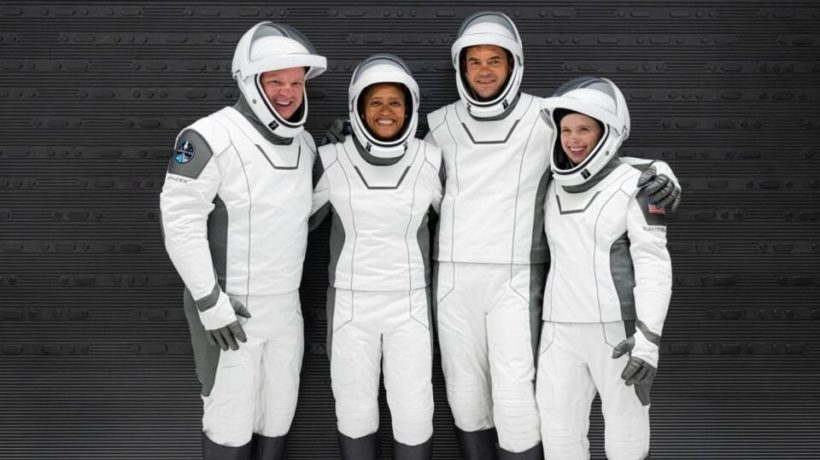Tonight, the next batch of space tourists are set to lift off aboard a SpaceX rocket.
Tonight, the next batch of space tourists are set to lift off aboard a SpaceX rocket. Organized and funded by entrepreneur Jared Isaacman, the Inspiration4 mission touts itself as “the first all-civilian mission to orbit” and represents a new type of space tourism.
The four crew members will not be the first space tourists this year. In the past few months, the world witnessed billionaires Richard Branson and Jeff Bezos launching themselves and a lucky few others into space on brief suborbital trips. While there are similarities between those launches and Inspiration4—the mission is being paid for by one billionaire and is using a rocket built by another, Elon Musk—the differences are noteworthy. From my perspective as a space policy expert, the mission’s emphasis on public involvement and the fact that Inspiration4 will send regular people into orbit for three days make it a milestone in space tourism.
WHY INSPIRATION4 IS DIFFERENT
The biggest difference between Inspiration4 and the flights performed earlier this year is the destination.
Blue Origin and Virgin Galactic took—and in the future, will take—their passengers on suborbital launches. Their vehicles only go high enough to reach the beginning of space before returning to the ground a few minutes later. SpaceX’s Falcon 9 rocket and crew Dragon vehicle, however, are powerful enough to take the Inspiration4 crew all the way into orbit, where they will circle the Earth for three days.
The four-person crew is also quite different from the other launches. Led by Isaacman, the mission features a somewhat diverse group of people. One crew member, Sian Proctor, won a contest among people who use Isaacman’s online payment company. Another unique aspect of the mission is that one of its goals is to raise awareness of and funds for St. Jude Children’s Research Hospital. As such, Isaacman selected Hayley Arceneaux, a physician’s assistant at St. Jude and childhood cancer survivor, to participate in the launch. The final member, Christopher Sembroski, won his seat when his friend was chosen in a charity raffle for St. Jude and offered his seat to Sembroski.
Because none of the four participants has any prior formal astronaut training, the flight has been called the first “all civilian” space mission. While the rocket and crew capsule are both fully automated—no one on board will need to control any part of the launch or landing—the four members still needed to go through much more training than the people on the suborbital flights. In less than six months, the crew has undergone hours of simulator training, lessons in flying a jet aircraft, and spent time in a centrifuge to prepare them for the G-forces of launch.
You can watch here:







